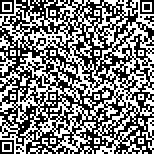Archive > Volume 40 Issue 6 > 2014,40(6):754-758. DOI:10.7519/j.issn.1000-0526.2014.06.012 Prev Next
Experimental Research of the Impact of Simulated Cold Wave on Hypertension Disease
- Article
- Figures
- Metrics
- Preview PDF
- Reference
- Related
- Cited by
- Materials
Abstract:
Based on Zhang Shuyu’s research (2013), the impact of cold wave on hypertension disease is preliminarily discussed through the animal experiments. The cold wave process is simulated in the environmental test chamber (TEM1880). At the same time, 27 healthy rats are randomly divided into the control group, 3 hours before Tmin (minimum temperature) group, 1 hour before Tmin group, Tmin group, 1 hour after Tmin group, 3 hours after Tmin group, cold wave process group, 5 hours after the cold wave process group, 7 hours after the cold wave process group, respectively. Each group has 3 rats. All the groups except the control group are exposed to the cold environment and taken out in accordance with the developing progress of cold wave respectively. The following indexes are measured: systolic blood pressure (SBP), heart rate (HR), weight, blood lipid, noradrenaline (NA), angiotensin Ⅱ (Ang Ⅱ), whole blood viscosity (WBV), etc. The experimental results show that the air temperature decreases rapidly under the control of the high pressure after cold front leaves in the cold wave process. WBV, NA and Ang Ⅱ can rise to the maximum value at the Tmin, making blood pressure increase in experimental rats in the whole time, and are hard to return to the original level even after the cold wave.
Keywords:
Project Supported:
Clc Number:


Mobile website









